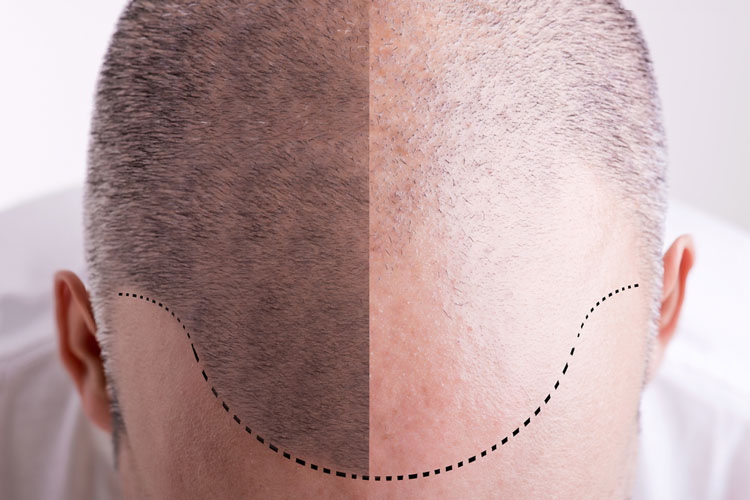
A study has found that the LSS gene is responsible for hair loss caused by the hypotrichosis simplex.
Researchers led by human geneticists at the University of Bonn discovered the LSS gene, and how it is responsible for the rare form hair loss experienced from childhood. The research team found that changes in this gene leads to the impairment of an important enzyme that has a crucial function in cholesterol metabolism.
Those who are affected from this condition tend to have fine hair that sprouts sparsely in infancy, with progressing hair loss as age increases. Hypotrichosis simplex is a rare form of hair loss (alopecia), with the condition being limited to a few hundred families worldwide.
On-demand webinar: Recent advances in diagnostics and treatments – from small molecules to cellular therapies
With recent advances in medicine, cellular therapies are one step closer to becoming a reality where re-programmed cells, tissues and organs can be used as therapeutic agents. This webinar discussed the journey of medical treatments from small molecule to cellular therapies.
Watch now
Three families, not related to each other and of separate ancestry, had their coding genes examined by the researchers. All of those affected had mutations in the LSS gene.
Professor Regina C. Betz from the Institute of Human Genetics at the University Hospital of Bonn said: “This gene encodes lanosterol synthase – LSS for short. The enzyme plays a key role in cholesterol metabolism.”
However, the cholesterol blood values of those affected are not changed.
“There is an alternative metabolic pathway for cholesterol, which plays an important role in the hair follicle and is not related to blood cholesterol levels,” said Prof Betz.
The research team used tissue samples to identify where the lanosterol synthase is located in the hair follicle cells. The research team mentioned how the hair roots are formed in the follicle, and if the LSS gene is not mutated, the associated enzyme is also located in the system of very fine channels in the follicle cells, the endoplasmic reticulum.
If a mutation is present, the research team explained how the lanosterol synthase also spreads outside these channels into the adjacent substance, the cytosol.
“We are not yet able to say why the hair is falling out,” said lead author Maria-Teresa Romano, a doctoral student in Prof Betz’s team. “It is likely that the displacement of LSS from the endoplasmic reticulum results in a malfunction.”
Researchers led by human geneticists at the University of Bonn discovered the LSS gene, and how it is responsible for the rare form hair loss experienced from childhood. The research team found that changes in this gene leads to the impairment of an important enzyme that has a crucial function in cholesterol metabolism.
Those who are affected from this condition tend to have fine hair that sprouts sparsely in infancy, with progressing hair loss as age increases. Hypotrichosis simplex is a rare form of hair loss (alopecia), with the condition being limited to a few hundred families worldwide.
On-demand webinar: Recent advances in diagnostics and treatments – from small molecules to cellular therapies
With recent advances in medicine, cellular therapies are one step closer to becoming a reality where re-programmed cells, tissues and organs can be used as therapeutic agents. This webinar discussed the journey of medical treatments from small molecule to cellular therapies.
Watch now
Three families, not related to each other and of separate ancestry, had their coding genes examined by the researchers. All of those affected had mutations in the LSS gene.
Professor Regina C. Betz from the Institute of Human Genetics at the University Hospital of Bonn said: “This gene encodes lanosterol synthase – LSS for short. The enzyme plays a key role in cholesterol metabolism.”
However, the cholesterol blood values of those affected are not changed.
“There is an alternative metabolic pathway for cholesterol, which plays an important role in the hair follicle and is not related to blood cholesterol levels,” said Prof Betz.
The research team used tissue samples to identify where the lanosterol synthase is located in the hair follicle cells. The research team mentioned how the hair roots are formed in the follicle, and if the LSS gene is not mutated, the associated enzyme is also located in the system of very fine channels in the follicle cells, the endoplasmic reticulum.
If a mutation is present, the research team explained how the lanosterol synthase also spreads outside these channels into the adjacent substance, the cytosol.
“We are not yet able to say why the hair is falling out,” said lead author Maria-Teresa Romano, a doctoral student in Prof Betz’s team. “It is likely that the displacement of LSS from the endoplasmic reticulum results in a malfunction.”
[“source=ndtv”]
